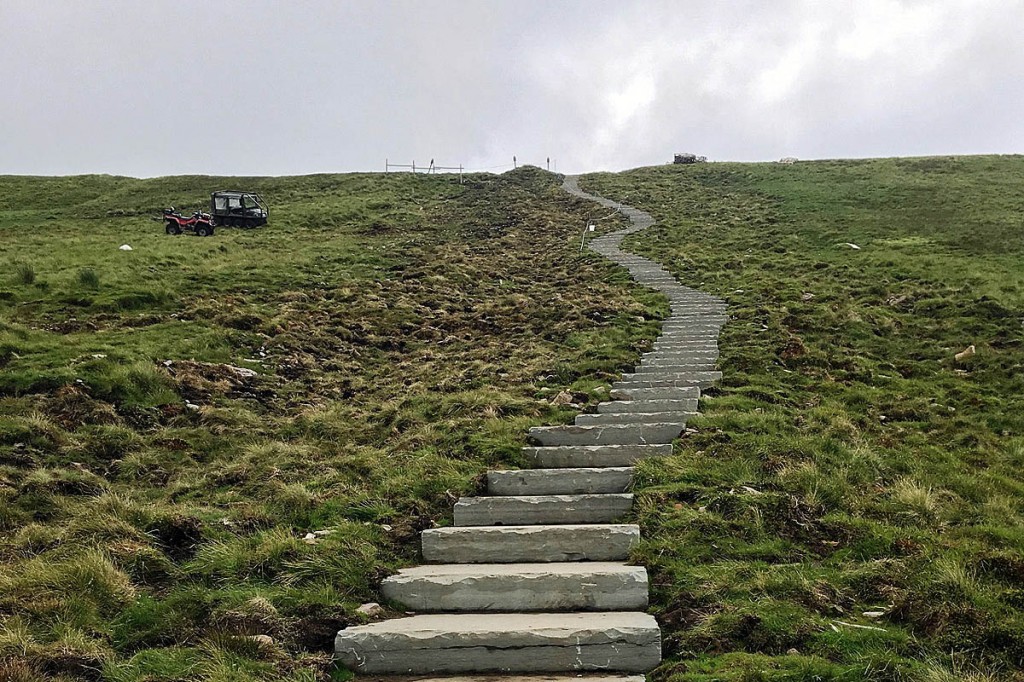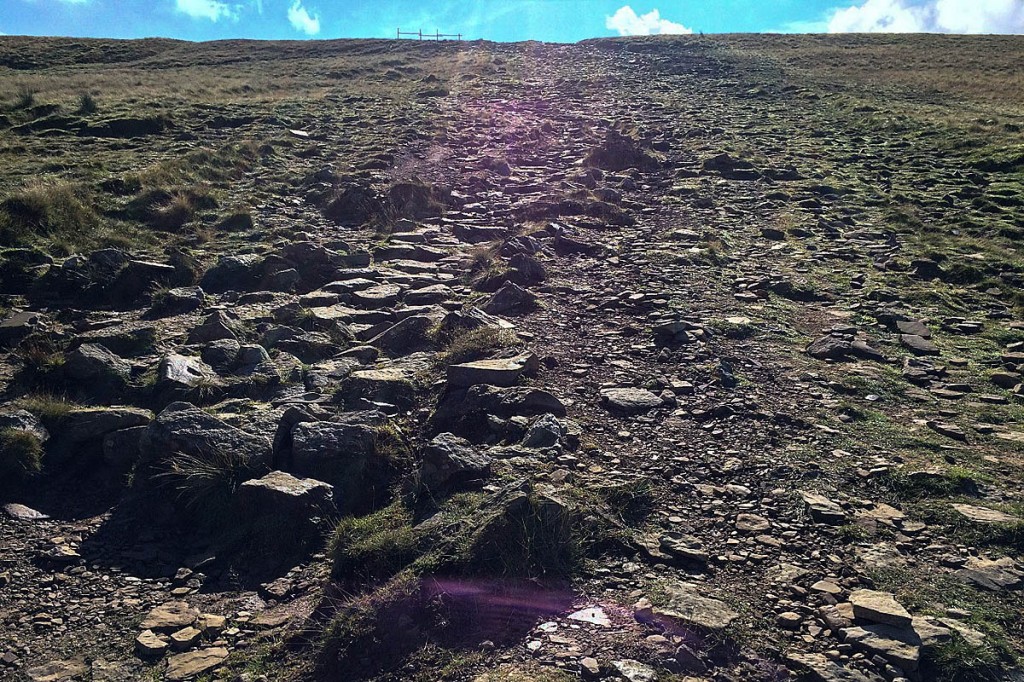A set of stone steps installed on a badly eroded route on one of Yorkshire’s Three Peaks has been specially designed to encourage people to use them rather than go round them.
The flags were quarried in the South Pennines and airlifted on to Pen-y-ghent ready for laying on the slopes of the fell.
An estimated 80,000 people make the ascent of the mountain each year, many of them taking part in the Three Peaks Challenge. The path is also part of the Pennine Way national trail. Pen-y-ghent is ranked by Ordnance Survey as the seventh most popular walking route in Britain.
The thousands of boots and running shoes left a scar the size of a football pitch on the northern side of the fell.
Yorkshire Dales National Park Authority rangers put more than 200 stone flags into place using diggers, often in driving rain and wind. The project cost £58,000.
The Whitworth Blue sandstone flags came from a quarry in Whitworth and were dressed at a factory on Stainforth Road, near the foot of Pen-y-ghent.
Pennine Way ranger Colin Chick helped to create the 200m path. He said the flags were new cut stone but would soon weather, and were from the same source as used elsewhere in the national park.
He said: “If you look closely, you can see lots of black bits. That’s coal. We had the surface of the flags heated with an industrial blow torch to ‘pop’ the coal seams and produce a really grippy effect.
“We have tried more traditional stone pitching in the past but people kept leaving the path, as they found it awkward to walk on and difficult to establish a stride pattern. We accept that these flags are perhaps more regular in appearance, but we’ve found that if you don’t make steps comfortable, people just won’t use them.”
Each flag is 100-150cm long, 100cm wide and 20cm deep. The smallest flag weighed in at 561kg, the largest at 765kgs – more than three-quarters of a tonne.
Kate Hilditch, area manager for the national park authority’s ranger service, said the project had drawn on decades of upland path management expertise. “The sheer number of walkers enjoying Pen-y-ghent meant that we had to think very carefully, and put in a path that would not only last but mostly importantly be used.
“I think we’ve successfully balanced the long-term conservation needs of the area with the demands placed on it by walkers.”


hughwestacott
27 July 2017If 80,000 walkers per year ascend Pen-y-gent that is an average of 219 each day. Does anyone know the evidence on which this estimate is based?
Hugh
Dave
28 June 2019Perhaps some evidence gathered from the P-y-g café using people who have clocked in / out doing the three peaks challenge?